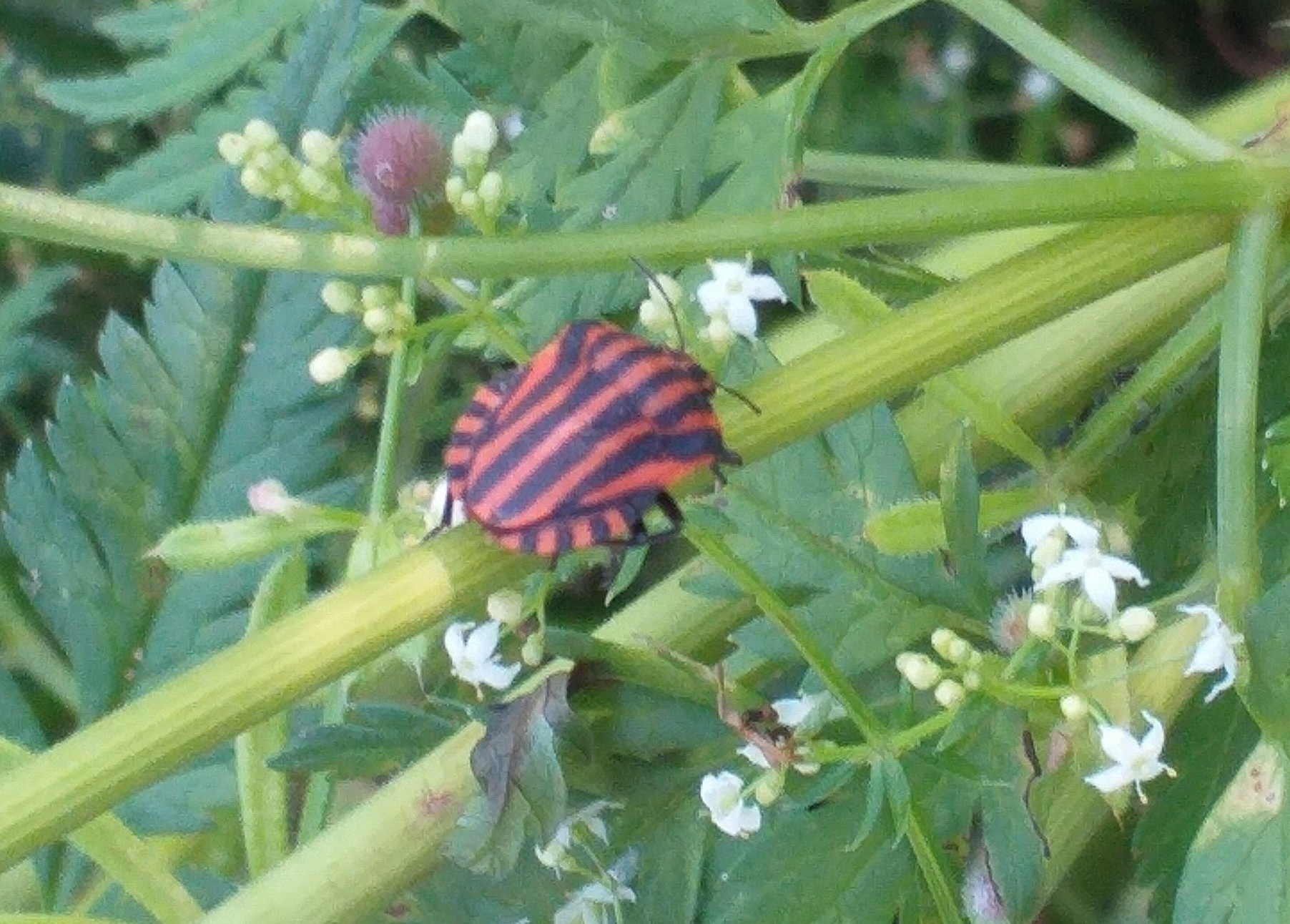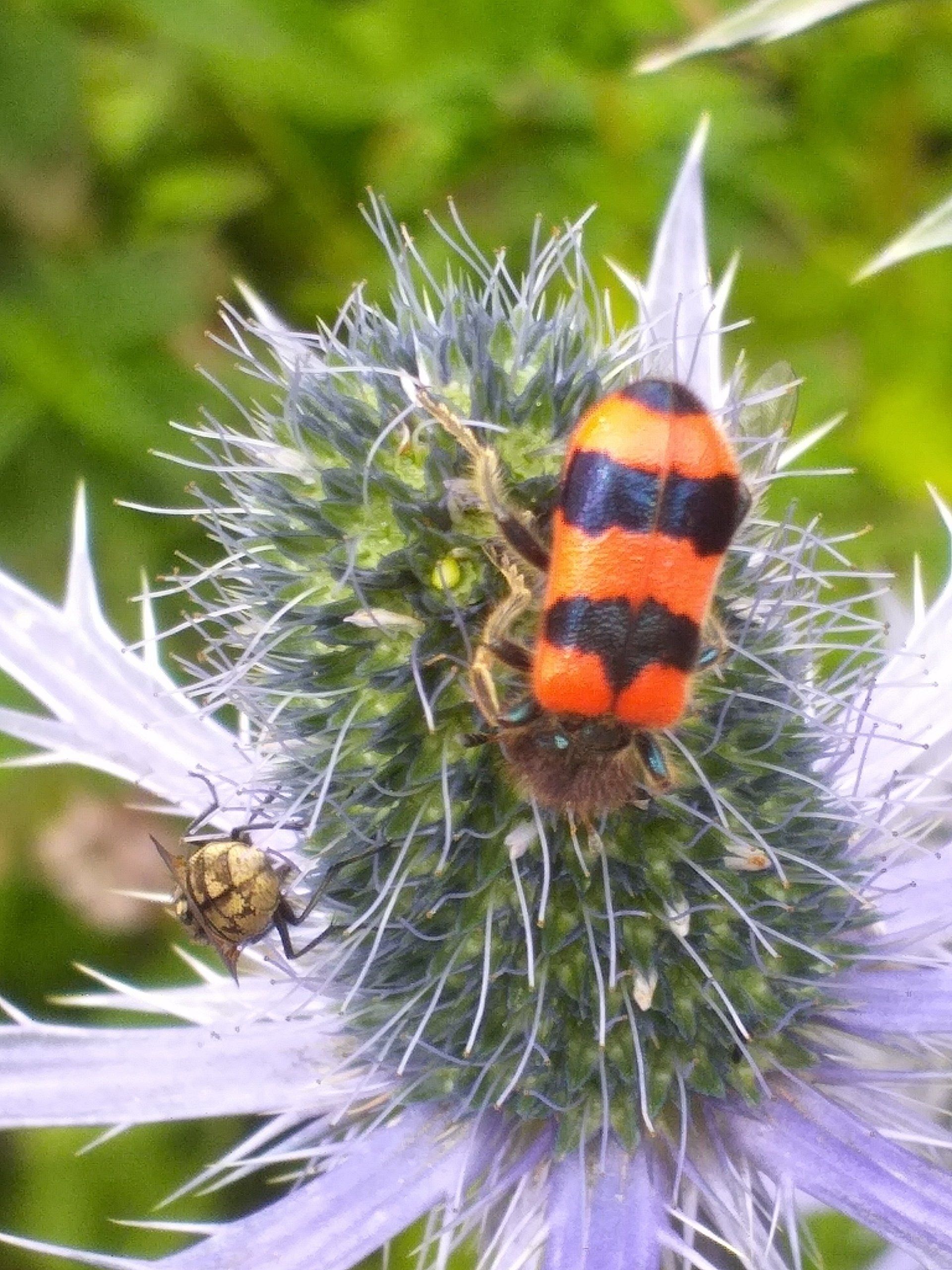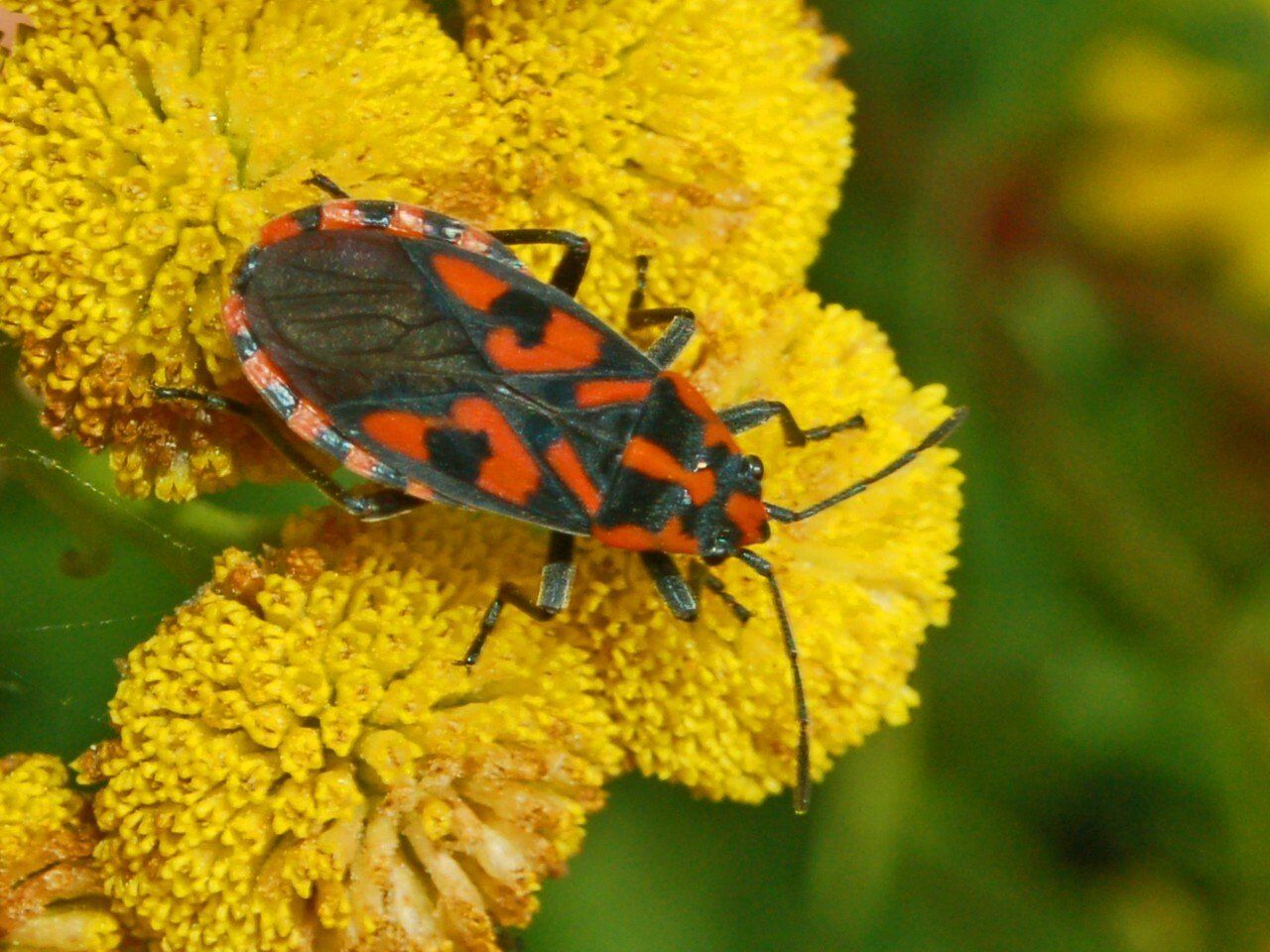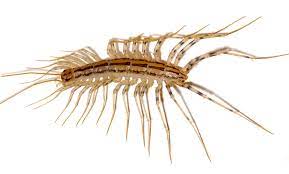AUTHOR MUSINGS
Some words of wisdom
Please sign up below for exclusives, free books, and a monthly email.
Friend or fiend? 01st Aug 2021 Podcast Version >>
and ladybirds were the reason to have wildflowers, native plants and the occasional surprise plant – such as my Eryngium alpinum 'Blue Star' (Alpine Sea Holly) which has proven to be very popular with the insect world.
Now, my eyes are opening to all the other incredible interesting beasties who live or visit my garden and I’m going to share a few which have been easy to see due to their colour.
Fire Bug/ Gendarme
In the spring and early summer, the front of our house is invaded by small red and black insects. These are Pyrrhocoris apterus, fire bugs, or Gendarmes as they are called in France as they carry the colours of the old police uniforms.
They create a colourful splash as they congregate in hugs numbers on rocks, under rocks, on plants, under plants, in cracks and crevasses and they enjoy sunbathing en-masse in full sun.
They have no need to hide from predators as their colour signifies ‘poison,’ or ‘danger,’ or ‘I taste disgusting,’ and so they don’t have any predators.
It would be easy to believe they are damaging plants as they swarm over and around them, but they don’t.
The larvae eat slugs and snails, the adults eat seeds, nectar, pollen, and dead insects such as other gendarmes, wasps, and we have seen them congregating on a dead baby bird. I’m not sure if they ate it but it did disappear.
At the moment, they prefer the front garden where there are warm rocks to sunbathe on, so we are going to create more rocky patches in the back garden and help a few to migrate next year. They do not fly so we will provide the transport.
Friend or fiend?
They are a gardener’s friend and the more the merrier, I think.
mostly brown or green varieties but this was the first time I’d noticed these stripy creatures.
They love to suck the juices from umbellifer flowers which are made up of many tiny flowers held on short flower stalks and look like umbrellas, such as fennel, cow parsley, wild carrot, angelica, sweet cicely etc.We have lots of wild carrot in the garden so I am hoping they leave my fennel alone, and so far they have, but if they do decide to snack on it I know the fennel will grow back, it is such a robust plant.
Because of their colouring they do not have any predators, but they are more camera shy than the gendarmes. As soon as I loomed close to take their photo they scuttled off at a surprising speed and hid under the foliage. I tried taking a picture of two nestled under a flower, but I couldn’t get the stripes. Finally I managed to take a photo of this beautiful beast as it raced across the stem.
Friend or fiend?
They have as much right to the plants in my garden as I do and if they encourage people to grow more wildflowers such as the pretty wild carrot which is also edible, and herbs such as sweet cicely to detract them from fennel and maybe other flowers, then they are a friend of mine.
Trichodes Apiarius
And then I spied another black and red beetle sitting on a wild carrot flower but this one had stripes across the wing cases, quite a long body and it was a little bigger than the Gendarmes. This is Trichodes Apiarius and as the Latin name suggests they lay their eggs in the nests of solitary bees and honeybees.
The larvae then eat some of the bees as they emerge.
You’d think this would make them a fiend, but nature has a way of keeping a balance and I’m sure this insect is doing just that.
After all it is humans that are causing the decline in bees not this beetle. The adult beetle feeds on pollen and will munch on a few other small insects too.
Friend or fiend?
As diversity is key to a healthy system, I’m accepting these colourful beasties as friends.
Seed bug/ Ground bug
And another red and black beastie, this time with a touch of white. It’s a Spilostethus saxatilis. It, like the Gendarmes, likes to sunbath on rocks and logs in late summer so I will look out for them this autumn as I’ve only seen a few of them wandering across herbs and flower heads and never when I’ve had the camera nearby.
They do not congregate in great numbers but are solitary beasts, apart from when they mate of course.
They like the juice from plants such as wild carrot- again- and they eat seeds. I’m beginning to see a pattern here. More wild carrot in the garden, more pretty beasties.
Friend or fiend?
I’m becoming partial to all these garden visitors so I’m opting for friend.
It must have been about 6cm long in the body, but the legs added a couple more cm to the overall length.
It scuttled from shadowy place to shadowy place, looking for food or somewhere to sleep for the day.
Some people reacted with fear and others with curiosity, they stepped back and pointed it out to the chemist.
And, to my delight, no-one tried to kill it.
It has a venomous sting which it uses on its prey, but it does not seek out humans although if trapped in a hand, clothing or bedding it may panic and use it’s sting to try and escape. It is generally nocturnal, roaming buildings at night eating almost any insect including flies, mosquitoes, wasps, and hornets.
Friend or fiend?
A friend indeed and welcome in my house.
Taking the time to observe, even if it is just for a moment when walking through the garden, connects me with nature, to the diverse fauna and flora of this beautiful planet we inhabit, and I am grateful to be alive, here, and now.
If you have enjoyed this BLOG, or found it helpful, please
consider buying me a coffee or buying one of my books. Thank you
Subscribe to my secret library
Copyright © 2024 Jenni Clarke Author. All Rights Reserved




